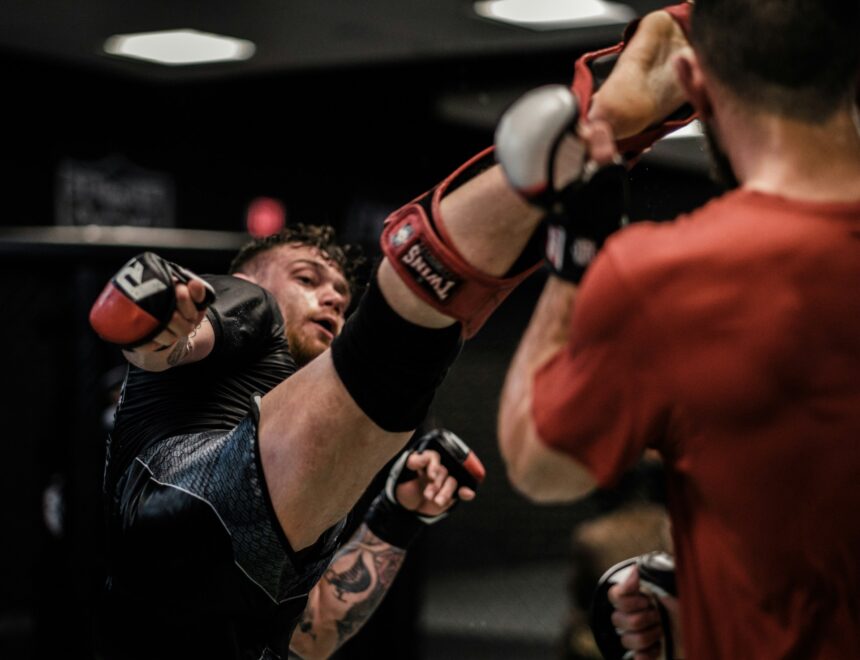
 MMA Betting Tips & News
MMA Betting Tips & News
Skill alone isn’t enough to guarantee success in MMA. The way a fighter applies their techniques and the style they specialise in can make all the difference. Over the years, we’ve seen a shift in the sport from single discipline showdowns to a battleground for well-rounded competitors. But not all MMA styles have adapted equally. Some have consistently outperformed others, particularly under the current judging criteria.
For anyone analysing matchups, understanding these stylistic approaches is essential. Fighter records don’t always tell the full story, it’s the underlying line of action that often determines who has the edge when the cage door closes.
The Evolution of MMA Fighting Styles
MMA began as a clash of distinct martial arts disciplines, karate versus boxing, wrestling versus jiu-jitsu, but has metamorphosed into a sophisticated blend of techniques. Modern fighters are no longer one dimensional specialists but well-rounded athletes proficient in multiple disciplines.
However, not all MMA styles are created equal in today’s competitive landscape. The current UFC ruleset, with its scoring criteria and fight dynamics, has increasingly favoured certain approaches, particularly wrestling styles that control positioning and dictate the pace of fights.
For bettors, recognising these trends offers a significant edge when assessing matchups and odds.
The Core Fighting Styles in MMA
MMA fighters typically develop expertise in three broad categories:
Striking: Focused on stand-up combat using punches, kicks, knees, and elbows. Disciplines include boxing, Muay Thai, karate, and kickboxing.
Grappling: Emphasises control through takedowns, throws, and ground fighting. Wrestling, judo, and Brazilian Jiu-Jitsu (BJJ) are the primary grappling arts.
Hybrid: Combines elements of both striking and grappling, often developed through MMA-specific training rather than traditional martial arts.
Historically, the most successful champions have demonstrated proficiency across all three while maintaining a speciality in one key area. Of the current UFC champions in March 2025, eight out of eleven have strong wrestling backgrounds, a telling stat about which fighting styles are currently being performed at the highest level.
Striking Styles: The Art of Stand-Up Fighting
When assessing striking specialists for betting purposes, you need to be able to distinguish between different stand-up styles:
Muay Thai practitioners excel in clinch fighting and devastating leg kicks, making them formidable at controlling distance. Fighters like former champion Petr Yan use this style to systematically break down opponents.
Boxing specialists bring precision punching and superior head movement, allowing them to dominate in exchanges. Sean O’Malley‘s rise to bantamweight championship showcased how elite boxing can neutralise more well-rounded opposition.
Kickboxing combines elements of both, with fighters like former double champion Alex Pereira demonstrating how devastating this approach can be. Pereira’s remarkable power carried him to championships in two weight classes before his recent loss to wrestling and combat sambo specialist Magomed Ankalaev, further illustrating the style dynamics at play in modern MMA.
When betting on striking specialists, look for fighters who:
- Maintain excellent takedown defence (above 80%)
- Show superior footwork and distance management
- Demonstrate fight-ending power in their preferred weapons
Elite strikers like former light heavyweight champion Alex Pereira (23-4) and former middleweight champion Israel Adesanya have demonstrated how a striker can dominate when they’ve developed sufficient anti-wrestling skills. However, Pereira’s recent defeat to Ankalaev, a wrestling-based fighter, reinforces the pattern of wrestling’s effectiveness against even the most dangerous strikers. Although Ankalaev may not have landed a takedown, the control time and takedown attempts put a dampener on Perreira’s style. It forced him to fight defensively while always being wary of the possible takedown attempts coming his way. When facing wrestlers with less refined striking, elite stand-up fighters often present excellent betting value.
Grappling and Submission Mastery
Brazilian Jiu-Jitsu has produced some of the most spectacular finishes in UFC history, with submission specialists capable of ending fights from seemingly disadvantageous positions.
BJJ’s effectiveness has evolved significantly over the years. Early UFC events saw BJJ practitioners dominating through unfamiliarity, but modern submission specialists must be more sophisticated in their approach.
Current lightweight champion Islam Makhachev combines his wrestling base with elite submission skills, making him particularly dangerous. His ability to exhaust opponents with wrestling before applying submissions has led to a remarkable finishing rate.
When betting on submission specialists, consider:
- Their ability to secure takedowns or pull guard effectively
- Performance against opponents with strong submission defence
- Cardio reserves for late-fight submission attempts
Historically, Charles Oliveira‘s UFC record for most submissions (16) demonstrates the effectiveness of this approach when executed at the highest level. However, pure submission specialists without strong wrestling or striking often struggle against well-rounded opponents who can dictate where the fight takes place.
Wrestling: The King of MMA?
Wrestling has long been considered one of the most effective foundations for MMA, and with good reason. The ability to dictate where the fight takes place, whether standing or on the ground, gives wrestlers a built-in strategic advantage. This level of control is a major reason why so many champions come from a wrestling background.
Here’s why wrestling remains so dominant:
Control of Positioning: A strong wrestler can decide whether to keep the fight standing or take it to the mat, forcing opponents to react rather than execute their own game plan.
Favourable Scoring: Judges heavily reward takedowns and control, even when little damage is done. Fighters who can maintain top position often win rounds by default.
Fatigue as a Weapon: Wrestlers excel at wearing opponents down with relentless pressure, making it harder for strikers and submission specialists to execute their techniques effectively.
Right now, the UFC’s championship landscape reflects this trend. As of March 2025, several titleholders have a strong wrestling foundation:
Heavyweight: Jon Jones (28-1, 1 NC)
Light Heavyweight: Magomed Ankalaev (20-1, 1 NC)
Middleweight: Dricus Du Plessis (21-2)
Welterweight: Belal Muhammad (24-3, 1 NC)
Lightweight: Islam Makhachev (26-1)
Bantamweight: Merab Dvalishvili (18-4)
Recent fights further highlight how effective wrestling remains. Magomed Ankalaev’s victory over Alex Pereira is a fighting case in point. Even though Pereira is one of the most feared strikers in MMA, Ankalaev’s wrestling ability dictated the fight. He didn’t even need to rely on securing multiple takedowns, just the threat of them alone forced Pereira to fight cautiously, limiting his ability to engage on his terms.
For those looking to make informed betting decisions, understanding the impact of a practiced wrestling technique is crucial. Fighters with a strong wrestling background and solid defensive skills tend to control fights more often than not, making them a smart pick in many matchups.
Betting on MMA Styles: What to Consider
Weighing in from a bettor’s perspective, MMA style matchups often prove more predictive than simple records or rankings. Consider this:
Style Dominance Hierarchy: In general, wrestlers tend to beat strikers, grapplers often neutralise wrestlers, and strikers frequently overcome pure grapplers, forming a loose “rock-paper-scissors” dynamic.
Defensive Capabilities: Look beyond offensive skills to defensive metrics. A striker with 90% takedown defence presents a different proposition against a wrestler than one defending only 60% of attempts.
Fight IQ and Adaptability: Fighters who can adjust their approach mid-fight often outperform one-dimensional specialists, regardless of style.
Physical Attributes: Think about how physical traits like reach, speed, and power complement a fighter’s MMA style. A wrestler with overwhelming strength might succeed despite technical deficiencies.
When examining the current UFC landscape, the fighters with the highest win percentages tend to be those with strong wrestling backgrounds who have developed competent striking and submission defence. This creates a pattern that savvy bettors can exploit.
Making Informed Bets Based on MMA Styles
To translate style analysis into profitable betting, consider these practical approaches:
Identify style mismatches: Look for fights where one fighter’s strengths directly exploit the other’s weaknesses.
Research training camps: Fighters working with elite coaches in their opponent’s speciality often perform better than expected.
Assess recent performances: Has a fighter shown improvement in traditionally weak areas? This could indicate a shift in their effectiveness.
Consider fight duration props: Style matchups often predict how long a fight will last. Wrestler vs. striker matchups frequently go the distance, while grappler vs. striker contests tend to end earlier.
Look for line value in underdog wrestlers: Bookmakers sometimes undervalue wrestling-heavy fighters who lack finishing ability, creating opportunities for value bets.
The current MMA landscape clearly favours wrestling-based approaches, with most champions utilising wrestling as either their primary weapon or as a critical defensive skill. For bettors, this trend provides valuable insight when assessing matchups and odds.
As you develop your MMA betting strategy, remember that understanding fighting styles offers a significant edge over casual bettors who focus solely on records or recent results. By analysing how MMA styles interact and recognising which approaches the current ruleset rewards, you can identify value that others miss.
Ready to put your knowledge into action? Visit our main betting site to find the latest odds on upcoming UFC events, and implement your style-based betting strategy with confidence.
Remember, successful MMA betting comes from informed analysis rather than gut feeling. Study the styles, understand the matchups, and bet smart.
Check out our MMA Betting Tips & News page for more reading.
FAQs
How can I research a fighter’s style before betting?
Start with official UFC statistics for quantitative data on striking and grappling metrics. Watch recent fights to assess qualitative aspects like fighting stance, preferred techniques, and responses under pressure. Look at statistics of the recent fights of the fighter you are researching. There are some fantastic sources for MMA statistics, Tapology and Sherdog being two of the most renowned. Follow reputable MMA analysts who specialise in technical breakdowns, and research a fighter’s background before transitioning to MMA, collegiate wrestlers and Olympic judokas often maintain those styles as their foundation.
Do fighters often switch styles, and how does that affect their performance?
While fighters continue developing throughout their careers, fundamental style shifts are rare at the elite level. More common are tactical adjustments within their core style. When fighters attempt dramatic style changes between fights, they typically underperform as new techniques haven’t been fully integrated. This creates betting opportunities when oddsmakers overvalue recent training camp narratives about style evolution.
What are some common betting mistakes when considering fighting styles?
The most frequent error is overvaluing finishing ability while undervaluing control. Many bettors are drawn to knockout artists and submission specialists without considering how difficult it is to finish elite opponents. Another mistake is failing to account for defensive capabilities, a wrestler with poor submission defence against a BJJ specialist presents a different proposition than one with solid defensive grappling. Finally, bettors often don’t adjust for how styles perform over different fight durations, with wrestlers typically gaining advantage in later rounds.
Related articles




